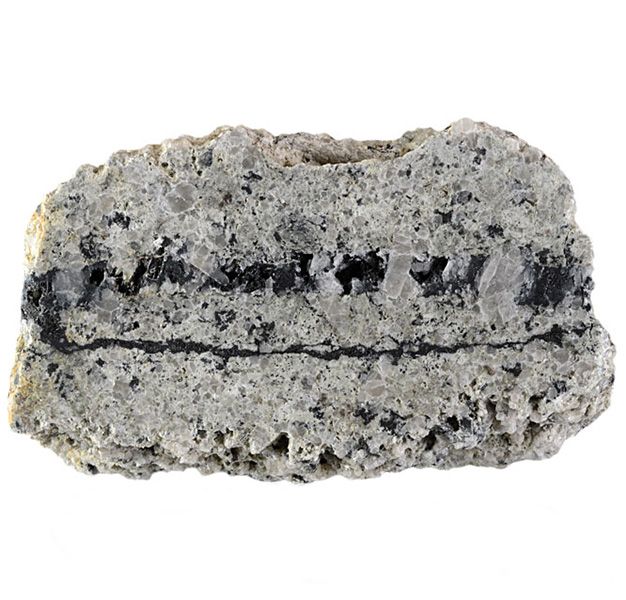
Fact sheet
This sample comes from reclaimed land near the village of Trethurgy, close to the giant Carclaze china clay pit, St Austell, Cornwall. The rock is a hydrothermally altered granite cut by a cassiterite bearing tourmaline vein that formed asboron-rich late-stage magmatic-hydrothermal fluids from which the tourmaline crystallised, also carried tin. It is from this paragenesis that the entire tin industry of Cornwall is based - an industry that can trace its beginnings from Roman times or possibly even earlier.
The thin section shows a coarse grained igneous texture with large grains of quartz, muscovite mica, and altered plagioclase feldspar. Blue/brown igneous tourmaline is present in the granitic portion of the rock but the majority of the tourmaline grains are found in the vein. This hydrothermal tourmaline is darker in colour with blue/brown pelchroism and the vein also contains cassiterite (tin oxide), distinguished by its higher relief and dark brown colour, although unlike many oxides, it is not opaque.
The United Kingdom Virtual Microscope (UKVM) collection consists of igneous, sedimentary and metamorphic rocks from around the UK.
It is intended as a teaching resource, helping to tell the story of the common rock types and how they form, and reflecting the history of the UK at the margins of the continent of Europe. The collection is a series of teaching sets, for example igneous rocks from the North Atlantic Igneous Province and SW England; high-temperature metamorphic rocks from Scotland and low-temperature metamorphic rocks from Wales; and sedimentary rocks, including English limestones and sandstones.






